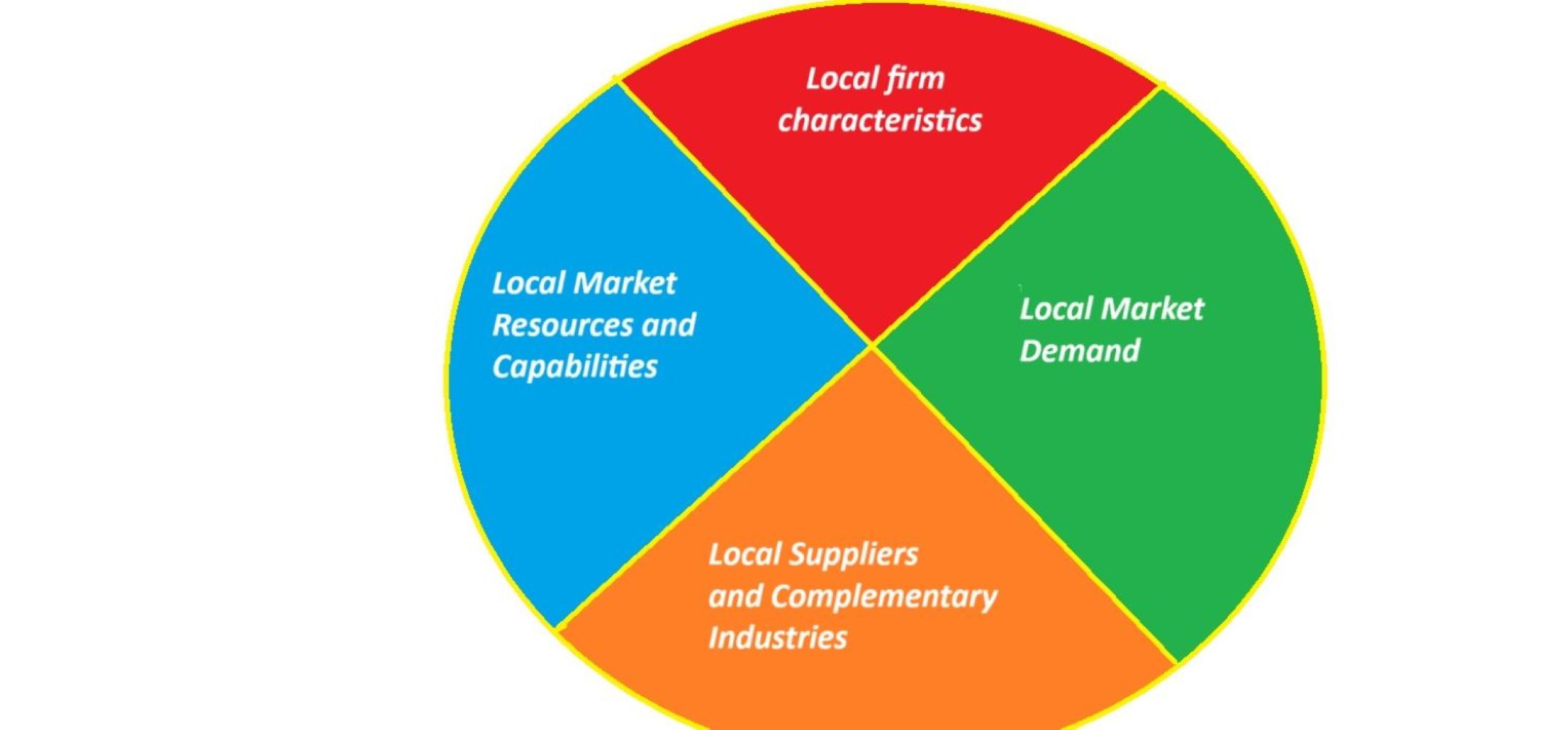Top Modern Theories of International Trade | Complete Guide

1.COUNTRY SIMILARITY THEORY:
As we already are aware of the fact that international trade takes place between two industries of two countries. But international trade can also take place within each industry (i.e., intra industry) between two countries. Intra-industry trade amounts to nearly 40 per cent of world trade. For example, Japan exports Toyota cars to Germany whereas Germany exports BMW cars to Japan. This peculiar phenomenon happens due to the fact that Japan markets provide prestige and performance seeking automobile buyers to BMW cars while German market provides quality-conscious and value-oriented customers to Toyota cars. Steffan Linder – a Swedish economist – explained the phenomenon of intra-industry trade in 1961. According to Linder, the similarities in consumer preferences in the countries that are at the same stage of economic development provide the scope for intra-industry trade among countries. In this firm-based theory, Linder suggested that the companies that develop new products for the domestic market, export the products to those countries that are at similar level of development after meeting the needs of the domestic market. Linder’s country similarity theory then states that most trade in manufactured goods will be between countries with similar per capita incomes, and intra-industry trade will be common. This theory is often most useful in understanding trade in goods where brand names and product reputations are important factors in the buyers’ decision-making and purchasing processes.
2.PRODUCT LIFE CYCLE THEORY:
This theory was propounded by Raymond Vernon, a business professor at Harvard Business school, in the 1960s. The theory that originated in the field of marketing proposed that an international product life cycle consists of four stages viz.,
- New product innovation
- Growth
- Maturing product, and
- Decline
Stage 1: NEW PRODUCT
Firms innovate new products based on needs and problems in the domestic country. Though the innovated product can be produced anywhere in the world and marketed in the domestic market, the firm mostly locates the manufacturing facilities in the domestic country to have immediate market feedback to be able to modify and develop the product accordingly and to save time and cost of transportation.
Stage 2: GROWTH
Increase in the sales of the new product attracts the competitors. At the same time, the increased awareness of the new product in various countries particularly in advanced countries increases the demand for the product. The competitors at this stage may concentrate mostly on the process technology rather than on product technology. Competitors start producing the product in various foreign markets at this stage. However, the original producing country would increase its exports to various countries though the competition has emerged in certain important foreign markets where local production has taken place.
Stage 3: MATURITY
Worldwide production increases during this stage along with the demand for the product resulting in decline in exports. The increased competition results in increased product standardization and cost reduction. The producers start gaining the economies of scale reducing the cost of production per unit. The lower per unit cost of production results in exports to developing countries.
Stage 4: DECLINE
Markets for the product at this stage concentrate in less developed countries as the customers in advanced countries shift their demand to further new products. Thus, most of the production plants at this stage locate in developing countries and exports decline considerably at this stage.
Even the original country may become net importer during this stage. Thus, the volume and direction of international trade come down considerably in this stage.
3. GLOBAL STRATEGIC RIVALRY THEORY
Global strategic rivalry theory emerged in the 1980s and was based on the work of economists Paul Krugman and Kelvin Lancaster. Their theory focused on MNCs and their efforts to gain a competitive advantage against other global firms in their industry. Firms will encounter global competition in their industries and in order to prosper, they must develop competitive advantages. The critical ways that firms can obtain a sustainable competitive advantage are called the barriers to entry for that industry. The barriers to entry refer to the obstacles a new firm may face when trying to enter into an industry or new market.
This theory focuses on firm’s strategic decisions to acquire and develop competitive advantage in order to compete internationally. MNCs acquire and develop competitive advantage through a number of means. They are broadly categorzsed as follows:
- Owning Intellectual Property Rights
- Investing in Research and Development
- Achieving Large Scale Economies
- Exploiting the Experience Curve
4. PORTER’S NATIONAL COMPETITIVE ADVANTAGE THEORY
In the continuing evolution of international trade theories, Michael Porter of Harvard Business School developed a new model to explain national competitive advantage in 1990. Porter’s theory stated that a nations competitiveness in an industry depends on the capacity of the industry to innovate and upgrade His theory focused on explaining on why some nations are more competitive in certain industries. To explain his theory, Porter identified four determinants that he linked together.
The four determinants are:
- Local market resources and capabilities,
- Local market demand conditions,
- Local suppliers and complementary industries, and
- Local firm characteristics.

- Local market resources and capabilities (factor conditions). Porter recognized the value of the factor proportions theory, which considers a nation’s resources (e.g., natural resources and available labour) as key factors in determining what products a country will import or export. Porter added to these basic factors a new list of advanced factors, which he defined as skilled labour, investments in education, technology, and infrastructure. He perceived these advanced factors as providing a country with a sustainable competitive advantage.
- Local market demand conditions. Porter believed that a sophisticated home market is critical to ensuring ongoing innovation, thereby creating a sustainable competitive advantage. Companies whose domestic markets are sophisticated, trendsetting, and demanding forces continuous innovation and the development of new products and technologies. Many sources credit the demanding US consumer with forcing US software companies continuously innovate, thus creating a sustainable competitive advantage in software products and services.
- Local suppliers and complementary industries. To remain competitive, large global firms benefit from having strong, efficient, supporting and related industries to provide the inputs required by the industry. Certain industries cluster geographically, which provides efficiencies and productivity.
- Local firm characteristics. Local firm characteristics include firm strategy, industry structure, and industry rivalry. Local strategy affects a firm’s competitiveness. A healthy level of rivalry between local firms will spur innovation and competitiveness.
In addition to the four determinants, Porter also noted that government and chance play a part in the national competitiveness of industries. Government can, by their actions and policies, increase the competitiveness of firms and occasionally entire industries.
Porter’s theory, along with other modern, firm-based theories, offers an interesting interpretation of international trade trends. Nevertheless, they remain relatively new and minimally tested theories.
Conclusion
For years, theories concerning international trade have been the subject of intense research and debate. Growing international trade has its own pros and cons. The analysis of the system of international trade by way of various theories has enabled a systematic framework for better understanding. International trade contributes to the economic growth of a country, thereby increasing the standard of living of its people, creating employment opportunities, a great variety of choices for consumer, etc. The development of trade theories has seen a major shift from the view of restricting free trade as stated in the theory of mercantilism to the various modern theories providing a better understanding to facilitate a smooth international trade with increasing benefits.
